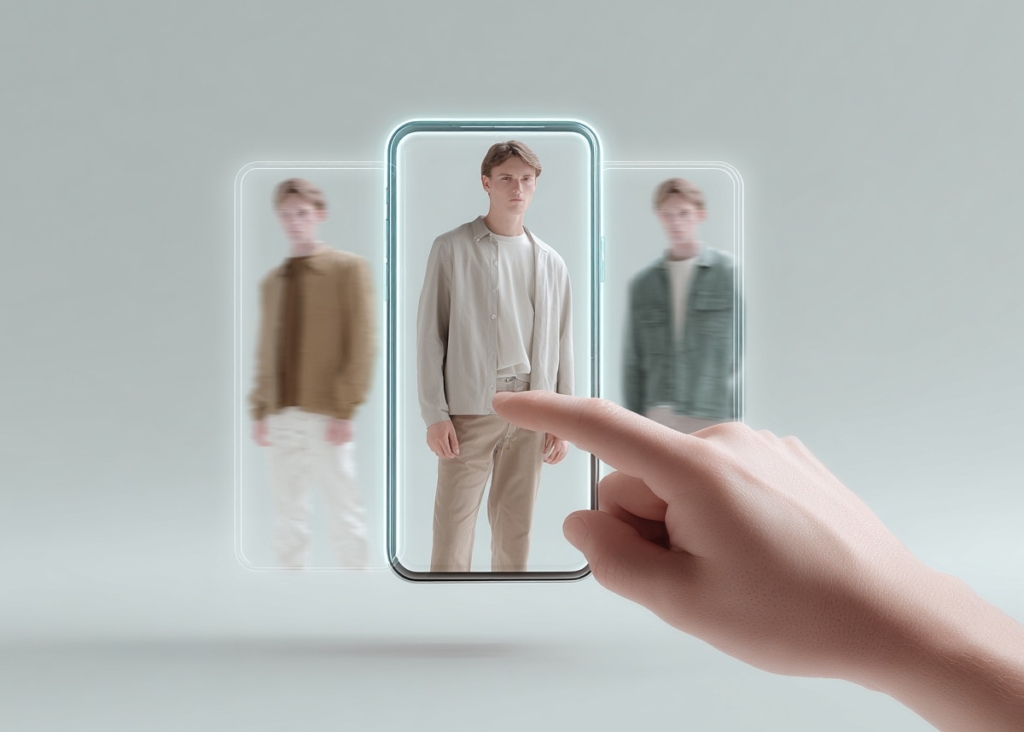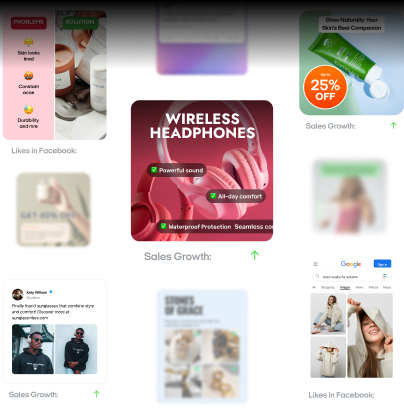How small businesses can use UGC Facebook ads to grow sales fast in 2025
Ever wonder why your Facebook ads struggle to convert? It’s often not the platform — it’s the content. People swipe past slick branded promos every day, but they’ll stop for relatable, real-world stories. That’s where UGC becomes your secret weapon.
UGC Facebook ads rely on photos, videos, and testimonials created by real customers. You’re tapping into genuine experiences rather than staged visuals. And guess what? 90% of consumers trust peer endorsements over traditional marketing copy. That level of authenticity can boost your engagement without crushing your budget.
Why do UGC ads often outperform traditional branded ads? Simple: They build trust faster. Your audience sees content that feels personal, not promotional. Plus, you can source UGC from influencer collaborations, community photo contests or spontaneous customer posts. You’ll capture compelling stories with less cost and less time than planning a production-heavy campaign.
In this guide, you’ll discover:
- How to find, secure, and optimize UGC for Facebook Ads Manager
- The legal steps you need to know before using customer content
- Tips for using ad formats, from carousel posts to Instagram Stories
- Upcoming trends like AI personalization that will shape the future of UGC ads
By the end, you’ll have everything you need to launch authentic, high-performing Facebook ad campaigns that resonate with real people. Ready to give your ads a genuine edge? Let’s get started.

Benefits of using UGC in Facebook ads
Looking for a quick way to boost your Facebook ad performance without blowing your budget? You can’t go wrong with User-Generated Content. Instead of pouring thousands into a professional shoot, you can tap into your community for authentic posts, like customer photos, videos, and real-life testimonials. These genuine moments act as trusted social proof, bridging the gap between your brand and your audience.
If we compare UGC vs. Influencer vs. Affiliate marketing, UGC campaigns can deliver 2.6x higher click-through rates and are 5x times more likely to convert compared to typical studio ads. Why is it so effective? Because people trust down-to-earth voices over glossy branding. In fact, 83% of consumers consider recommendations from friends and family the most believable form of advertising. By showcasing real experiences, you break through ad fatigue and optimize cost-per-acquisition.
Need evidence? Just look at Gymshark and Airbnb. They rely on unfiltered snapshots, workout selfies, and travel stories from real customers to power their campaigns. These relatable visuals build immediate rapport, boosting brand trust and improving your return on ad spend. Plus, Facebook’s algorithm rewards authenticity with better relevancy scores, which lowers your cost-per-click and increases organic reach.
Building trust and authenticity
You can establish credibility in your Facebook ads by highlighting real experiences from everyday users. Rather than leaning on overly polished promos, feature unscripted customer voices that resonate on a human level. According to Forbes, consumers say user-generated content strongly influences their purchase decisions, and ads that include UGC can rise trust 8.7x more than influencer content.
This impact comes from people’s preference for authentic stories over corporate messaging. Every genuine testimonial or social media post reassures prospective buyers in ways standard ad copy can’t match. By tracking engagement metrics such as likes, shares, comments, and conversions in Facebook Ads Manager, you’ll see how true-to-life content delivers measurable results and deepens brand credibility.
To overcome skepticism and guide consumers toward advocacy, consider using testimonial videos, unfiltered photos, or organic reviews. These real-life snapshots ensure your ads feel like personal endorsements rather than overt promotions, making it easier to connect with audiences seeking honesty and authenticity.
Amplifying reach and engagement
You know that UGC builds trust, but it also supercharges your reach and engagement on Facebook. According to Yotpo, UGC-based Facebook ads can see a 28% higher customer engagement rate, driving more likes, comments, and shares than standard brand-created campaigns. These community-driven signals boost your ad’s algorithmic relevance, often resulting in broader visibility and a lower cost-per-click.
Glossier experienced a surge in organic engagement and higher conversions simply by displaying customers’ real-skin selfies and candid tips. When shoppers recognize stories that mirror their own lives, they can better picture their own success, which drives them to like, comment, share and, ultimately, buy.
You can spark a similar organic boost by reposting top-performing UGC, encouraging followers to tag friends, or launching hashtag challenges that invite community interaction.
Tracking the impact is simple: use Facebook Ads Manager or another analytics platform to measure organic impressions, share counts, and engagement rates. Over time, these community-powered tactics help your brand emerge as an authentic market leader, allowing your message to spread naturally and build awareness far beyond your existing audience.
Cost-effective creative strategies
You know high production costs can quickly strain your marketing budget. That’s where UGC comes in to provide a budget-friendly solution for your Facebook advertising strategy.
According to Bazaarvoice, UGC-based campaigns can reduce CPC by up to 50%, outperforming many studio-produced ads in cost-efficiency and engagement. Traditional video shoots often exceed $10,000, whereas repurposing user-sourced creativity usually involves only minimal editing and permission handling.
Airbnb serves as a classic example. Instead of relying on glossy, studio-shot photos when it first started advertising, the company showcased actual traveler experiences. This approach not only cut production expenses but also allowed Airbnb to test new visuals swiftly: if one traveler video didn’t click with viewers, it was replaced just as quickly with another. The ability to pivot fast gave Airbnb an efficient and highly relatable marketing framework.
Similarly, Lush keeps content feeling fresh by regularly reusing shopper-generated videos in its feed promotions. As its community of loyal customers continues to grow, so does its library of on-brand user footage, no expensive studio shoots required. By continuously refreshing ads with genuine testimonials and real-life demonstrations, Lush stays both cost-effective and authentic.
To replicate this affordable UGC ad strategy, gather brand-related social posts each month, request permission from users, optimize visuals with light editing, and test multiple ad variants in Facebook Ads Manager. By following this repurposing workflow, you’ll not only optimize your spend but also maintain a steady pipeline of authentic content, ensuring long-term ROI and audience trust.
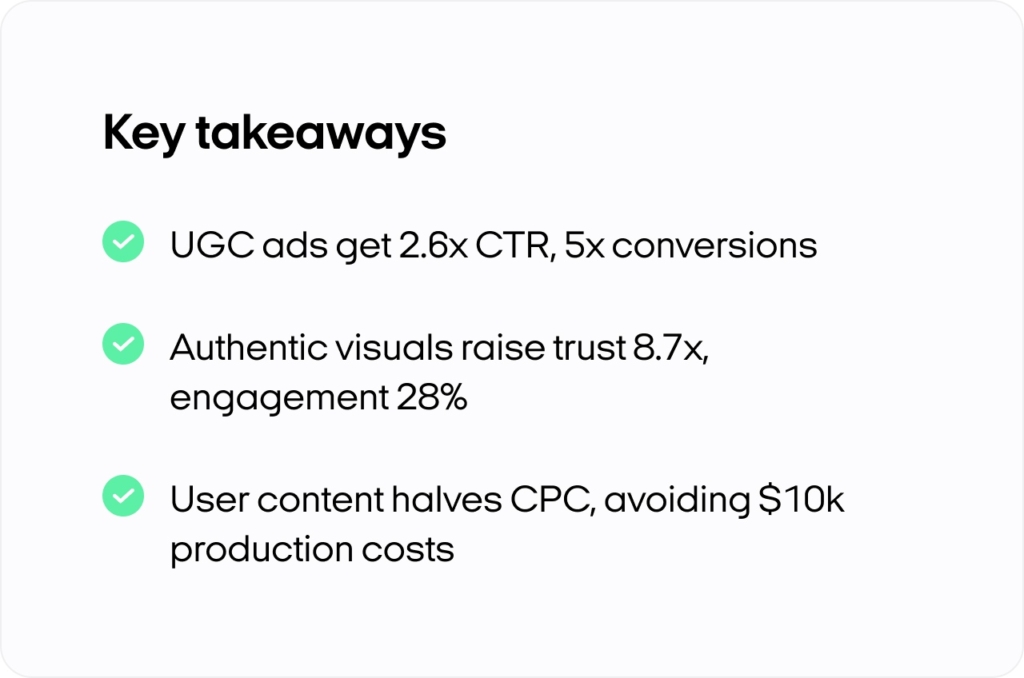
Types of UGC for Facebook ads
Not sure what type of UGC for social media to use in your next Facebook ad? With so many formats, like photos, videos, reviews, hashtags, it’s easy to feel stuck. Some formats boost clicks. Others build trust. And the best one for your campaign often depends on your goals, budget, and audience.
Let’s break down the most effective user-generated content formats for Facebook ads and explore where each shines best.
Use real customer photos that feel like everyday moments
If you’re short on budget but big on community, customer photos are one of the fastest ways to build trust. Today’s audiences, especially Gen Z, are skeptical of anything that looks too perfect. According to the Wall Street Journal, platforms like Instagram now offer integrated performance tracking for photo-based UGC, helping brands see just how impactful it really is.
Brands like Pura Vida Bracelets and Gymshark use carousel ads to feature real customers and aspirational brand moments. The results? Higher click-through rates, stronger engagement, and visuals that don’t feel like ads.
Try split testing a stock image vs. a real customer photo. Chances are, the UGC wins.
Let real videos do the talking
UGC video ads are a powerhouse for storytelling and product discovery. Nearly 40% of U.S. consumers spend more time watching UGC video than TV or streaming, and 50% say it helps them discover new products, according to Business Insider.
Some of the best-performing video types include:
| Video type | What it shows | Used by |
| Unboxing | First reactions and packaging experience | Apple, FabFitFun |
| Tutorials/how-tos | Step-by-step product use | Dyson, The Ordinary |
| Before-and-after | Product impact over time | Curology, Fenty Skin |
| Day-in-the-life | Daily lifestyle integration | Stanley, Our Place |
| Hauls/collections | Showcasing multiple items in one video | Sephora, Shein |
| First impressions | Unfiltered try-on or reaction | Rare Beauty, PlayStation |
| Comparison reviews | Head-to-head product demos | Fenty vs. Charlotte Tilbury |
Run an A/B test between a 15-second UGC video and a brand-produced studio clip. Track metrics like video view duration, CPC, and ROAS to see which delivers better engagement.
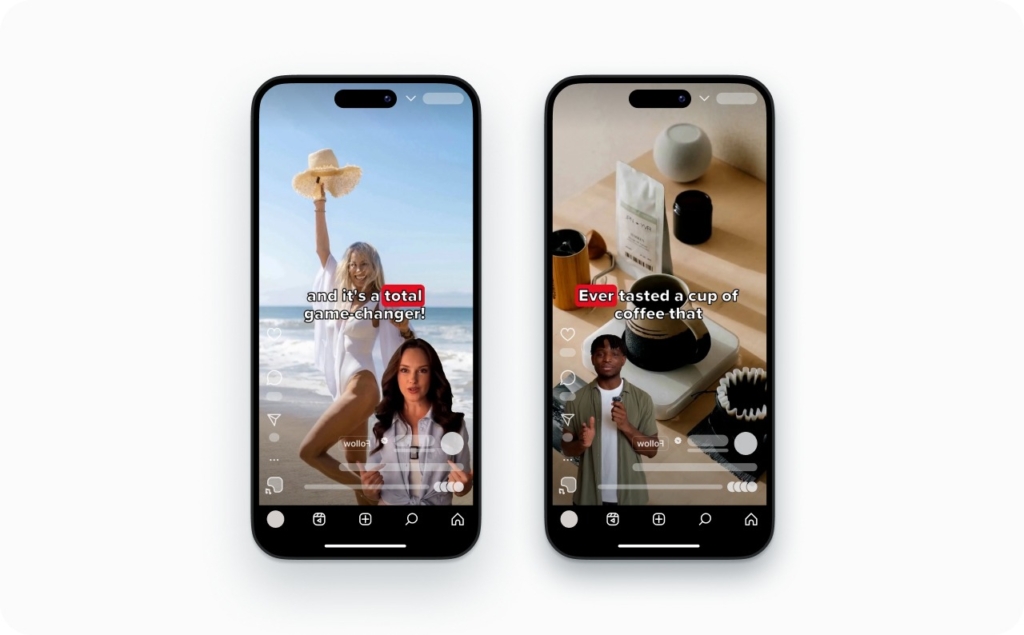
UGC videos vs. photos — which one works better?
There’s no one-size-fits-all answer. If you want fast-loading, thumb-stopping visuals, UGC photos are your go-to. They’re easy to source, quick to test, and ideal for carousel or collection ads. If you’re aiming for emotional depth, education, or product demos, UGC videos win. They drive higher view times, more comments, and stronger purchase intent.
Start with both and test what resonates most with your audience.
Let reviews and testimonials sell for you
Customer reviews and testimonials aren’t just nice-to-haves, they’re purchase drivers. Search Engine Journal reports that 77% of online shoppers read reviews before buying. In fashion, it’s 98%. In beauty, reviews influence 44.7% of buying decisions.
Brands like Blenders Eyewear use testimonials in Dynamic Product Ads, reducing CPA by 38% and boosting ROAS by 62%. Charlotte Tilbury overlays review quotes next to product visuals to reinforce trust mid-scroll.
Even one-sentence reviews, paired with a photo or star rating, can elevate a static ad to a social proof engine.
Boost visibility with hashtag campaigns and social mentions
Want to create buzz? Launch a hashtag campaign and let your community do the content work. TikTok, Instagram, and Snapchat all offer Branded Hashtag Challenge formats, and Facebook makes it easy to integrate that content into paid ads.
Toyota’s “Feeling the Street” campaign curated real Instagram posts and turned them into Facebook creatives, earning 1.2 million+ engagements and a 440% YoY increase in ad interaction. Brands like West Elm and Crown Resorts do the same by pulling timely posts into their retargeting and awareness campaigns.
These campaigns generate UGC social mentions, organic engagement, and ongoing relevance — all without extra production costs.
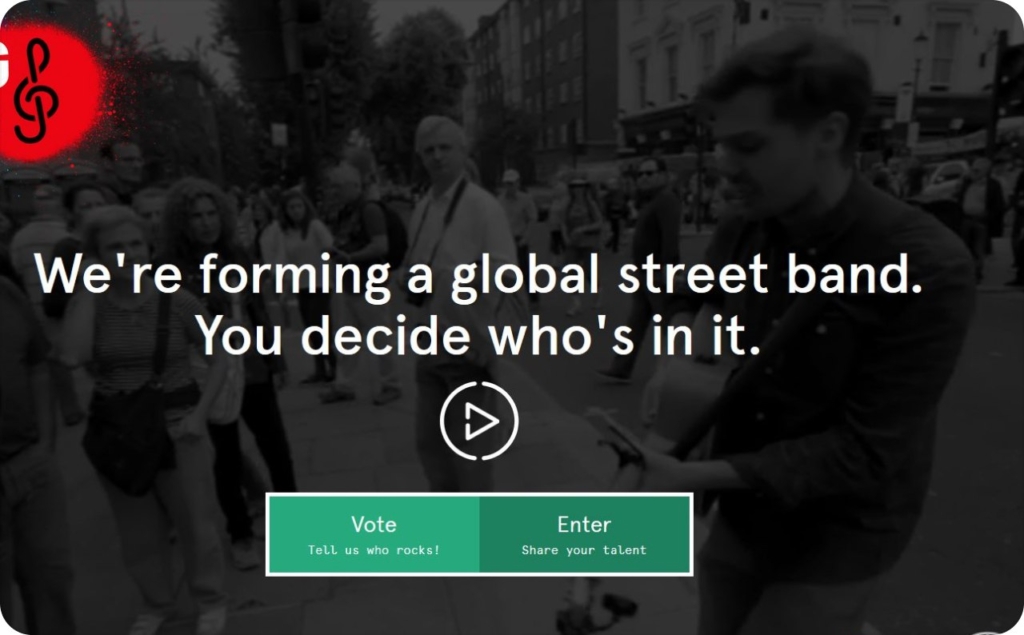
Photo source: Toyota
Show how it works in real life with lifestyle UGC
Some of the most persuasive content shows your product in daily life. Whether it’s a mom feeding her toddler with Else Nutrition or a student breaking in new Doc Martens, this type of product usage UGC helps people imagine your brand in their world.
These posts work great for fashion, tech, food, and wellness brands because they mix practical use with aspirational context. They also build narrative depth, each story adds a new layer to your brand without feeling like a hard sell.
Ask your most engaged customers to film a “day in the life” clip with your product — it’s gold for mid-funnel engagement.
A quick guide on how to match UGC type to your campaign goal
| Your campaign goal | Best UGC format |
| Build trust | Testimonials, reviews |
| Stop the scroll | Unfiltered customer photos |
| Teach or demonstrate | How-to videos, product tutorials |
| Create buzz | Hashtag campaigns, social mentions |
| Show real-life use | Lifestyle and “day-in-the-life” clips |
How to effectively use UGC in Facebook ads
Using UGC in Facebook ads takes more than reposting a customer photo. You need a simple, repeatable process — from sourcing content to publishing it in the right format, considering UGC video ad types and strategies.
Let’s walk through a clear, four-step plan to make your UGC ad-ready and high-performing.
Start by finding the right UGC
Great UGC doesn’t just appear — it’s encouraged. You can spark it by launching a branded hashtag, running a contest, or asking loyal customers to share their stories. Keep prompts simple. Invite people to show how they use your product in real life.
Look for content that’s naturally lit, focused on your product, and emotionally engaging. It doesn’t have to be polished, it just has to feel honest.
Platforms like Pixlee, Yotpo, and Archive help you collect and organize content.
Edit for mobile — it’s where people scroll
Over 95% of Facebook usage is on mobile. So your UGC needs to fit the feed and catch attention fast.
Use vertical-friendly formats like 4:5 or 9:16. Add captions, since most users scroll with sound off. Shorten longer videos into 15-second clips that get to the point quickly.
You don’t need a full studio setup to get this right. Tools like Canva, CapCut, and Adobe Express are great for light editing. Or use Zeely AI, which creates UGC-style video ads ready for social media with ad-ready hooks and scripts in just a few clicks.
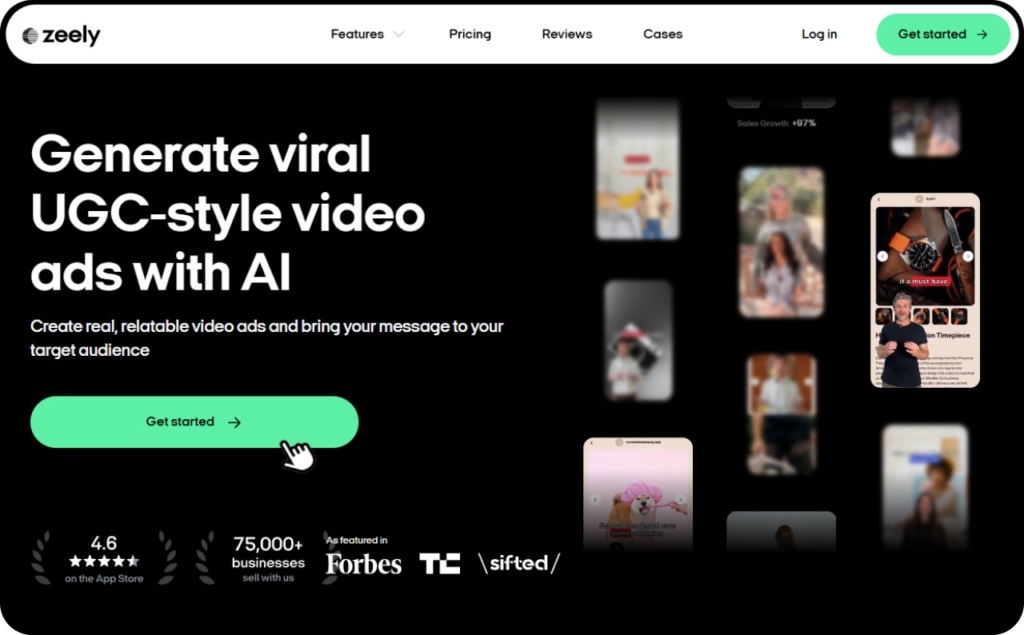
Don’t forget to get permission
Just because someone tags you in a post doesn’t mean you can run it as an ad. You need written permission.
That could be a DM, an email, or a signed release form. If you’re working with influencers, add usage terms to your contract up front.
Platforms like Rightsify and, TINT help simplify the permission process.
Choose the right format to make it work
If you’re showcasing transformations or multi-step how-tos, use carousel ads. For storytelling or tutorials, short video ads are ideal. Stories and Reels are perfect for vertical content that feels quick and spontaneous. Want to blend lifestyle UGC with product discovery? Go with collection ads.
For official specs, Meta’s Ad Guide is a handy reference.
UGC success stories and best practices
If you’re still wondering whether UGC video ads for e-commerce really works, the numbers and the brands behind them say yes. From mobile apps to fashion retailers, businesses are proving that authentic content made by real users consistently delivers better results than studio-shot campaigns.
Real brands are winning big with UGC
In e-commerce, brands like Dr. Dennis Gross, Dr. Squatch, and Ava Estell saw big results using embedded video reviews and UGC-style content on their product pages.
Reports from Videowise show conversion rates jumping up to 13%, while time-on-page and repeat visits also spiked. Instead of just telling customers what to expect, these brands let real people show them.
Big-picture trends are also validating this shift. Research from Market.us highlights that more than 50 million content creators now contribute to the global creator economy, with platforms like Baidu scaling UGC efforts through revenue-sharing models. In fashion, a ResearchGate study highlighted how brands like SHEIN and PrettyLittleThing use customer reviews, selfies, and try-on videos to build loyalty, trust, and repeat traffic at scale.
Data-backed tips from UGC experts
So what do the experts say about making UGC really work?
Start with structure. High-performing brands don’t just wait for great content, they plan for it. They build creator pipelines through ambassador programs, post-purchase email flows, and influencer seeding. Then, they test everything.
Brands that thrive with UGC typically run hundreds of creative variations each month, some even test over 800 per product, according to AppsFlyer’s mobile trend report. That means short vs. long video edits, quote overlays vs. none, and carousel tests across audience segments.
They also prioritize mobile-first delivery. This includes vertical video, quick-cut testimonials, and Stories that look like they belong on the user’s feed — not in an ad library.
And when it comes to tools? Brands like Gymshark, Coca-Cola, and Airbnb use internal teams and AI-powered platforms to manage UGC at scale. Solutions like Zeely AI are especially useful for small businesses — it helps create and launch UGS-style Facebook ads without having a production team or even an influencer, just using AI.
Future trends & emerging technologies in UGC for Facebook ads
UGC isn’t standing still and neither are the platforms that power it. As Facebook evolves, so does how brands use user-generated content to engage, convert, and retain customers. What worked last year might not be enough next quarter.
Here’s a look at the emerging trends, tech, and tools that will shape the next generation of UGC Facebook ads.
Smarter ad formats are powering personalization
The next wave of Facebook ads will be powered by automated creative personalization. Tools like Meta Advantage+, Facebook’s AI-powered ad platform, are already optimizing which content version appears to which user, based on behavior, preferences, and predicted engagement.
That means brands using UGC won’t just rely on one photo or one review. They’ll feed in dozens, and the algorithm will pick what works best in real-time. The key is volume — more variants mean more chances to match intent.
AR and interactive UGC are gaining ground
Interactive content is the next frontier. Think augmented reality try-ons, 360-degree product views, and polls embedded in Stories. Facebook’s support for AR lenses and branded filters means your customers can become part of the ad experience.
Brands in beauty and fashion are leading the charge. For example, try-on filters for lipsticks or sunglasses let users see the product on themselves before they buy — and many of these formats are built directly from UGC.
Expect to see more integration between interactive features and customer-submitted content, blurring the line between ad and experience.
Legal & ethical use of AI in UGC is a growing concern
As AI tools are increasingly used to generate or enhance UGC — via AI avatars, synthetic voiceovers, or deepfake-style personalization, legal and ethical questions are becoming more urgent.
Expect tighter guardrails from Facebook and regulatory bodies. You’ll need clear consent when altering UGC with AI or using it in synthetic formats.
Regulations will shape how you use UGC
From Europe’s Digital Services Act to ongoing data privacy reforms, the way brands collect and use content, especially from customers, will face closer scrutiny.
You’ll need to prove you have permission, disclose when content is sponsored or edited, and give users more control over their likeness in ads. Getting ahead of this means using clear permission protocols, audit-friendly systems, and staying up to date with Facebook’s branded content policies.
Final takeaways & next steps
Throughout this guide, we’ve explored how to source great content, format it for mobile, get legal permission, and publish it in formats that actually perform. You’ve seen real-world results from brands, proving UGC isn’t just nice to have — it’s a performance driver.
But understanding the strategy is only half the job. Now it’s time to take action.
Make execution easier with Zeely AI
If you’re short on time or creative bandwidth, Zeely AI is your all-in-one ads solution. It helps small businesses get noticed and grow with:
- Viral UGC-style videos created in under 7 minutes
- Selling static ads built on proven, high-converting templates
- AI-powered campaign automation that manages your Facebook and Instagram ads from setup to scale
- Mobile-first tools that let you create, edit, and launch anywhere — right from your phone
Built for everyone from first-time marketers to experienced entrepreneurs, Zeely makes it easy to build UGC-driven ads that convert — no editing or design skills needed. And with budget-safe testing and smart automation baked in, your campaigns stay efficient and optimized by default.
Also recommended

